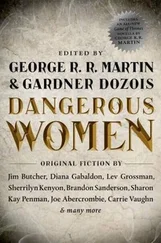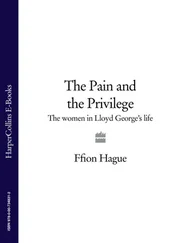Kojc's Textbook of Life gives answers to these and similar questions, even though some people might find them too plain, naive and simple-minded. As the Bible saying tells us, the stone which the masons have cast aside has become the corner stone. The psychology of fairy tales also shows us how most often the man who people did not bet on overcomes all difficulties, survives and acquires a pleasant life companion. Kojc is searching in a direction similar to the Little Prince. He knows that the essence is hidden, and that the external is manifested as a mirage (Maya).
We know that Martin Kojc was active in a practical way, that many of his works were translated into Dutch and German, and that he represented one of our nation's great potentials whose full realization was prevented by the last great war. Out of his fertile inheritance we are again acquiring his seminal work. In the last two decades a number of sages have appeared who teach a doctrine that is similar, and sometimes essentially identical, to that of Martin Kojc. Their popularity is great, and the printed copies of their published books can be counted in millions. In essence, these books contain nothing more than the postulates which were presented fifty years ago by Martin Kojc, but which are not a product of this century but rather of the thousands of years since the beginning of civilization, starting with the Vedas. Martin Kojc was influenced by Emile Coué (1857-1926), a pharmacist who postulated that all hypnosis is really self-hypnosis and that it only acquires power as such. Kojc was more in agreement with him in his other postulate which has also become an axiom of alternative thinking of that time and has remained such to the present, namely, that in a conflict between imagination and will, imagination always wins.
The postulates of Kojc's teachings are as follows:
•the significance of cause and effect connections
•observations are the basis for opinions and thus convictions
•convictions create imaginative pictures which correspond to these opinions
•imaginative pictures confirm opinions
•imaginative pictures contain a motorized element which strives towards realization
•existence of reincarnation
Before we begin a more detailed analysis of these postulates, it is important to acknowledge their daring and their probable source in the philosophical movements of the East and of Theosophy. Kojc was familiar with both. His daring was not so much because of the time, which was perhaps not receptive to such ideas, but in the strength of his opinions and his convictions.
The logic of the connection between cause and effect is of course the basis of the life wisdom in this textbook. This is true in teachings regarding this connection, but also the explanation in the context of karma and of course of reincarnation -- teachings which Kojc not only believes in, but also, one can say, knows about. He is that persuasive. Even though he appears to favor the predestination of man, he allows for creative power. If he did not this textbook would not be needed, since everything would be predetermined and decided in advance. We have to admit that he is somewhat unclear on this issue. The closest explanation of the activities which Kojc is suggesting for a full life can be found in the Taoist notion of wu-wei. This notion deals with letting things happen, allowing a natural course of events, and not intervening through our frequently erroneous strong will by which we would only disturb the natural order which operates on Earth as well as in the Universe as a whole. It's essence is a creative passivity which is a well for intuition and inspiration. The best way to think of this concept is to imagine a natural order which acts for the good of everyone. Many individuals would like it to act only for their own benefit, and for this and because of this they strive, but in vain...
Not only in the actionless activity of wu-wei, but also in other beliefs Kojc is very close to the Taoist fundamental notions about the world, man and life. Kojc renamed Tao a primeval power, but in terms of meaning the properties of the two are quite equivalent and overlapping. Tao does not do anything and yet everything gets done. According to Kojc, the primeval power uses matter for its various manifestations. One of these is man. Tao, or the primeval power, is thus in everything, fulfills everything and manages everything according to its own order, which is to a person often irrational and impossible to understand. The words Tao and wu-wei are not mentioned anywhere, but it appears that Kojc knew the Taoist world view and concepts.
Opinions are formed on the basis of observations, ones own experiences and those of other people. These opinions get further reinforced according to the principle that we see that which we know. This can have a very beneficial influence, but can also lead into negativity because this is a way in which a negative picture of the world, the environment and people can become entrenched. Since negative opinions usually are in contradiction with the world, it follows predictably that they engender doubt in an individual, and with doubt ambivalence and neurosis. Martin Kojc was a psychotherapist in private practice, and it appears that he understood the process of the genesis of neuroses. He believed that the synthesis of a person's opinions -- i.e., his convictions or conception of life -- strengthen in him a corresponding view or picture of this world. In any kind of relationship of a person to the world, the pictures always necessarily correspond with the person's opinions or convictions.
According to the well known psychotherapist Robert Assagioli and to sages of times past, notions -- or mental pictures and ideas -- have the ability to create conditions for corresponding actions. In the world of the Magi this is expressed in another way: Every picture on a mental level strives to become reality on a physical level. Kojc writes that he is trying to persuade the person of his time, and of our time, who has become increasingly more doubting and seemingly more knowledgeable. He is trying to persuade that person that conviction is the one thing that determines fate, and that a person is in fact led by his wishes. In the words of Emile Coué: Do not blame fate but yourself. It is only the belief that something good or bad can happen that makes possible the realization of either. The essence of Kojc's postulate consists of its attempt to lead the rationalists of this century to the realization of the cause and effect connection between convictions, which are formed by opinions, and the external manifestations of these convictions.
Imaginative notions, mental pictures and ideas are as elemental as that which is seen in the visual world. The Bible in Genesis speaks precisely of this when it says: In the beginning there was the Word and the Word was with God... The seminal work of Buddhist philosophy, Dhammapada, speaks of the same idea in the first line of the first verse:
Thought leads all things,
Thought begets and shapes them.
If a man full of evil thoughts
Talks or acts,
Suffering follows him
Like a cart the hooves of a harnessed steer.
(Dhammapada, MK 1987)
That which we wish must always be present in the form of an image, a picture. The more often we see such pictures, and the more energy we put into them, the more likely becomes their realization. This, which magic has known for thousands of years, now introduces itself in the methods of so-called creative imagery, creative imagination and positive thinking. Of course it is possible to implant such ideas, notions and pictures willfully into the consciousness of other people, which is a method used not only by populist leaders, propagandists and other seducers, but also forms a part of any therapy, including psychotherapy. In order for that which is suggestive to act on a person it has to become auto-suggestive. As we have already mentioned, imaginative pictures and opinions strengthen each other if they are in harmony with each other. Kojc puts it this way: Same attracts same.
Читать дальше












